Table of Contents
Acknowledgments Readers' Guide
Introduction The Narrative Official Stories The Participants Afrikaans Memory and Violence Final Thoughts Archive
Abbreviations Glossary
Gutenberg-e.org Columbia University Press
Essay
Asingeni (We Will Not Enter) The Schools
Asingeni was the text on a sign painted on the door of a school in Phefeni township. See also chapter 2.
Command of a space that was suitable for the "social organization of speech"1 and the organizational requirements of political action was by itself significant in the course of the uprising. This was especially important for how it connected to the issue that became its central rallying point. The schools of Soweto offered the organizational structure and physical structures where students could communicate among themselves and with those they were trying to unite behind their cause (if not across the hierarchical divide separating them from teachers). Schools were both physical gathering place and space for discourse for students who had to find places to meet and gather, exchange information, and make plans while sustaining the continued desire for learning, the imperative to create their own culture, and the ongoing processes of conscientization that had become so vital with the spread of Black Consciousness thought. It is appropriate to recall here to admonition that Lilli's brother spoke to her on the morning of the uprising:
When I arrived at home, he said, are you going to demonstrate tomorrow? […] And I said, no, what are you talking about, do you mean we are not going to school? He said, no, man, you've got to go to school. You go to your school, they will show you how to "demonstrate." You don't understand, …2 (See also: Chapter 2: The Narrative)
On August 1, 1976, at Regina Mundi church, a BPA (Black Parents' Association) meeting was convened for the purpose of encouraging students to go back to school. The discussion highlighted the importance of schools as physical spaces within which to organize:3
5The sentiments of the meeting were crystalised in the following points: That the students should go back to schools; that the police should withdraw from patrolling the streets as this had a tendency of scaring students;
[…]
that people refrain from burning their schools and property; that detained students be released. Tsitsi [sic] Mashinini announced that students were going back to school. It was clear that this was not for study purposes, but organising. He further said that the following day, on the 2nd August, there was going to be a meeting of the Soweto Students Representative Council at Morris Isaacson High School, where two representatives from each school would attend. [Emphasis added.]4
Many classrooms were necessary for this. The schools were scattered all over Soweto and thus created a network of spaces and lines of communication.5
Students organized their marches along the roads and paths that connected high
schools to primary schools, creating a broad, sweeping inclusive web of movement and action as students converged—at least initially—on
the open space before Orlando High School.
 At Sharpeville, in 1960, the issue around which people had organized was the imposition of pass laws, and the space in which they organized was in
front of police stations, associated with the administration that issued them. By 1976, the focus of resistance had shifted, as had the constituency
and the location: The issue now was the imposition of Afrikaans, and the place was school.
At Sharpeville, in 1960, the issue around which people had organized was the imposition of pass laws, and the space in which they organized was in
front of police stations, associated with the administration that issued them. By 1976, the focus of resistance had shifted, as had the constituency
and the location: The issue now was the imposition of Afrikaans, and the place was school.
The schools had become the place of resistance well before the explosion of violence on June 16, and in the months before the uprising the signs of the gathering storm were located in the schools. There were several encounters leading up to June 16, summarized by Lieutenant Colonel J. A. Kleingeld, that revealed the extent to which the schools had become the new place of protest in the township.
10
On May 17, 1976, Kleingeld was informed that schoolchildren at the Phefeni Junior Secondary School were refusing to attend classes because
certain subjects were being taught in Afrikaans.
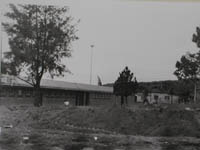 After speaking to F. S. Nhlapo, the vice principal of the school, he was assured that the inspector of Bantu education, De Beer, had been informed
of this. At this point there was no trouble at the school yet, but Kleingeld conveyed the information about the matter to his head office and to
the security police. After the newspaper The World reported on May 25, 1976, that strikes had spread to seven more schools, Kleingeld
looked into the matter again. During the night of May 25, windows were shattered at the Belle Higher Primary School in Orlando West. Again,
Kleingeld reported to his head office and to the security police. It seemed likely that striking schoolchildren (stakende skoolkinders)
were responsible and, as a preventative measure, a number of watchmen were posted near the school.
After speaking to F. S. Nhlapo, the vice principal of the school, he was assured that the inspector of Bantu education, De Beer, had been informed
of this. At this point there was no trouble at the school yet, but Kleingeld conveyed the information about the matter to his head office and to
the security police. After the newspaper The World reported on May 25, 1976, that strikes had spread to seven more schools, Kleingeld
looked into the matter again. During the night of May 25, windows were shattered at the Belle Higher Primary School in Orlando West. Again,
Kleingeld reported to his head office and to the security police. It seemed likely that striking schoolchildren (stakende skoolkinders)
were responsible and, as a preventative measure, a number of watchmen were posted near the school.
Another report was sent to the head office on June 3. The problems until then were centered on Belle and Thula Sizwe schools, but children there started going back to school on June 2, except for six who refused to go back to their classes and continued to "threaten and intimidate the other schoolchildren." A police patrol was sent to maintain order. On June 8, Lyman Mnguni, headmaster of Thula Sizwe Higher Primary School, asked for help from the police because those students who refused to go to classes were "showing up" (opdaag) and "intimidating" other pupils, preventing them from attending classes. Lieutenant Brand was dispatched and 15 Bantoeseuns (Bantu boys) were taken to Orlando police station for questioning. Again, Kleingeld said he reported the incident to his headquarters and to the security police. On June 7, Belle Higher Primary School once more asked for help from the police because striking children had smashed windows in the school and blocked those children who wanted to attend. Patrols were sent to the school to prevent any further damage. During this time, Kleingeld reported, no orders came from headquarters for any special action to be taken. On the afternoon of June 15, Bantu Lieutenant Saudi reported to him that the schoolchildren were planning a vergadering (meeting) at one of the high schools in Orlando. That evening Bantu Sergeant Masopa reported the same to him over the telephone.6
It was thus apparent that the march on June 16 did not occur without warning and that the police stationed in Soweto had had several encounters with schoolchildren on school grounds, encounters that would have already heightened their uneasiness and anger. When police tried in May to arrest a student whom they identified as at the heart of the trouble at the schools, students burned the police car, cut telephone wires, and cornered one of them in the principal's office. There had been several angry shouting matches and some encounters in which students had pelted police with stones. The press, even the Afrikaans press, had been quite outspoken about trouble brewing.
The political rallying point of the Afrikaans issue, and the existence of a generation of schoolchildren who chose to become the agents of change, made the schools the place of origin of the uprising. Classes and school affiliations provided the structure within which to organize young people across age groups, different schools, and multiple neighborhoods. The schools and the unifying experience of classroom and playground, choir and debating circle, had created solidarities that cut across the usual divisions of neighborhood, class, and ethnicity. Gender divisions were not so easily bridged, although the heady mixture of fearful excitement and the momentum of the day perhaps explained how even those last divisions fell away, at least for a time. For this group of people cohesive enough for organized resistance, the schools therefore provided both a forum and a field of participants. Classrooms and courtyards, playgrounds and laboratories were the places, and they provided the space for resistance and change.
In The State v. Twala and Ten Others7 Judge van Dyk concluded that strategy and planning meetings of SASM, the action committee, and the SSRC—during which it was decided, among other things, to demonstrate against Afrikaans as medium of instruction at black schools, organize worker stay-aways, and compel Urban Bantu Council members to resign—were held "on a regular basis approximately once a week and sometimes twice a week if a demonstration was to be planned." A list of venues makes the importance of schools as gathering places quite clear:
Morris Isaacson School (see page 657); a school somewhere in Dube (page 657); the Mncube School (page 659); the Daliwonga School (page 659); the Thesele School (page 1110); the Sekano Ntoane School (page 1110); the AME Church, Orlando (page 1110) and the St. Matthews Church, Emdeni (page 1110); at Naledi (page 955); House 8105, Zone 6, Diepkloof (page 692 and 699); the Senoane Secondary School (page 990); Diepkloof Secondary School (page 990); Meadowlands High School (page 990); Thutulore School (page 990)8
The space of the schools did not remain unchanged, and it was this space in particular—the schools and the classrooms—that revealed the ambivalent meanings associated with targets. The schools were perhaps the most perplexing of targets. They were the forum for protest but simultaneously the sites and symbol of the extensive betrayal by the system of Bantu education and, in the end, even of personal betrayal. Herein lies some explanation for why they too became the focus for the wrath of students. The classrooms that had been the initial space for organization, the school grounds that had provided both forum and audience—all of these were turned into battlefields: Windows were smashed, desks toppled, chalkboards ripped off the walls and used as raw material for placards. Especially at the beginning, many offices were destroyed, which may have been a symbolic attack on the administrative and authoritative hierarchies. If we return briefly to the inventories of damage above, it becomes clear just how severe and extensive the damage to schools and other educational facilities was: The number of schools damaged was 137, the cost of the damage amounting to R102,996.92; a total of 5 libraries were damaged at the cost of R86,240.44.
Kala Simon Lekganyane, a lieutenant and station commander of the South African Police, described the damage for Kagiso. At Mosupatsela High School on Sebenzisary Avenue, the office of the principal, staff offices and storage-room furniture in the three rooms, plus a duplicator, two typewriters, school records, books, and all sorts of writing materials were burned. The windowpanes of all the classrooms were broken. Two offices and the storage room were not completely destroyed but badly damaged on the inside and the roof (damage estimated at R200,000). At the Sandile Higher Primary School, which was located "in 'n oop veld" (in an open field), the principal's office, staff offices, a storage room, and two classrooms were burned. The two offices and the storage room were totally destroyed. The damage to the two classrooms was minimal, again suggesting that students were angry not so much at the school itself as at school authority figures who often refused to become involved. All furniture, books, and other teaching aids in the offices, in the storage room, and in the classrooms were totally destroyed (damage estimated at R200,000). And it went on: Ekuthuleni Higher Primary School, Kagiso Junior Secondary School, Tshweletsega Higher Primary School, Tembile Higher Primary School, Bosele Higher Primary School, and more. The pattern was astonishingly consistent: The students attacked the principal's and staff offices, perhaps a storage room, books, machines, and teaching guides, often school records, and occasionally equipment for the sciences. Everywhere, without exception, all the windowpanes to offices and classrooms were broken: Boipelo Higher Primary School, Atlholang Higher Primary School, Lengau Higher Primary School, Thusong Lower Primary School.
For a community that regarded education as the highest priority, making sacrifices for the education of their children, this destruction was difficult to countenance. Although many must certainly have had a sense of the complexities of motivation, anger, retaliation, and surging crowd willpower, the quandary that this particular set of targets posed even for those sympathetic to the students' agenda and actions, and especially for the older generation, was evident. Ellen Kuzwayo, teacher and social worker, was a well-known member of the older generation in Soweto, deeply sympathetic to the youth and fiercely engaged in the struggle for black liberation:
Perhaps it is very difficult to look at this instance that is being cited now in isolation. You see, I find it extremely difficult when I read the mood, I was in town [downtown Johannesburg] on the day, the 16th June, I was working in town and when I got back there… it would be very difficult when people get into a mob spirit and they do certain things, you don't know whether they do them because they don't value what is there. I think this is a situation that would be extremely difficult to isolate… .920
Ellen Kuzwayo's discomfort at the direction of the questions by prosecuting attorney K. P .C. P von Lieres in State v. Twala and Ten Others was as apparent in the quote above as was both the intent of von Lieres to lay the responsibility squarely at the feet of students and his assumption of their responsibility for the destruction. Pressed to describe how parents "look on children who burn down houses … who burn down schools and destroy libraries," she simply stated that the members of the Soweto community "are still searching who burnt the school and who burnt the libraries."10
She was well aware that in February schoolchildren heeding a challenge by the Soweto Student Representative Council had burnt library books,
but I know that parents, I don't know how many books, I don't know the circumstances … but I know that the black people they have made sacrifices for the education of their children. What children could have done at the spur of the moment I am not aware of and I don't think this would … [T]his community regard[s] education as something that is priority No. 1 in the life of Soweto.11
Whether intentionally or as a result of her own uneasiness with the implications of the line of questioning, Kuzwayo's testimony in this trial highlighted not only the complexity of this issue but introduced the idea that someone other than the students might have had a hand in increasing the violence.12
25Mr. Von Lieres:Did you, Mrs. Kuzwayo, what where your feelings when you read or heard the school had been burnt down or a library had been destroyed, your personal feelings? Did you agree with such conduct or disagree with it, did you condone it or thought it was the right thing to do?Ellen Kuzwayo:My first reaction I was shocked and I still wondered who did this.Court (Cillié):I have a feeling you are reluctant to give a direct reply to it? Don't hide about the question as to who was responsible for it, accept for the moment that somebody was responsible?Kuzwayo:I was shocked.Cillié:One way to get away from realities is to try and put the blame on someone else, that is a normal human reaction but there comes a time when one has to face facts?Kuzwayo:I say I was shocked.13
Arguing that student actions should not be misread and that they needed to be seen in context, not in isolation, Kuzwayo said that some parents were frustrated by their lack of control over their children and sought "to take their own children back to school in the midst of all what was happening."14
Her testimony, as well as the testy, uneasy exchange with the judge and the prosecution, indicated not so much evasion, a refusal to acknowledge the responsibility or even culpability of students, but rather the contradictions inherent in an understanding of the political will that these targets were seen to embody from two different points of view—that of the black students and that of the white state authorities. The issue was further complicated by the different perspectives cast by age and generation, especially the experience of parenthood, status, community leadership, and, what went with them, an abiding commitment to education and respect for property and authority.
In the end, and over time, those very places that had provided the meeting places and the constituency of protesters became sites of betrayal of a kind. Lieutenant Colonel S. D. Booysen, a security officer, was investigating and preparing the case against Twala and ten other Soweto students. In a small red booklet Booysen noted the identification of meeting places, homes, schools etc. as he accompanied each of the accused on trips through Soweto to point these out. His little book of notes revealed how certain leaders and participants were "used" to build a case against the leadership of the SSRC. Only one person refused to be coerced in this way under threat. According to Booysen's careful hour-by-hour handwritten notes, Daniel Sechaba Montsitsi, whom he questioned on the morning of June 21, 1978, did not want to point out or identify any of the places where voorvalle (incidents) occurred:
Hy beweer dat die rede daarvoor is dat hy die Veiligheidspolisie nie vertrou nie omrede hulle hom aangerand het. He beweer dat hy die aanranding aan die Landros gerapporteer gedurende Oktober 77. Nadat ek hom die versekering gegee het dat ek sal toesien dat hy nie in my teenwoordigheid aangerand sal word nie, weier hy nogtans om enige plek aan my uit te wys.He asserts that the reason for this is that he does not trust the security police because they assaulted him. He claims that he reported the assault to the magistrate during October 77. After I gave him assurance that I shall see to it that he will not be assaulted in my presence, he nevertheless refuses to identify any place to me.15What's this?
Notes:
Note 1: Luisa Passerini, Autobiography of a Generation: Italy, 1968, tr. Lisa Erdberg (Hanover, N.H.: University Press of New England for Wesleyan University Press, 1996), 69. back
Note 2: Lilli Mokganyetsi, interview by Helena Pohlandt-McCormick, tape recording, Johannesburg, December 1993. See also chapter 5, 'Afrikaans.' back
Note 3: back
Note 4: Aubrey Mokoena, testimony, 7 February 1977, SAB K345, vol. 148, Commission Testimony vol. 100, 4791. See also the report in reply of Mr. Mathabathe (at the meeting on 21 June 1976, at which the BPA was constituted) from a meeting of the Principals' Association, which had "applied to the Minister (of Education) for permission for the students to report to school on the 24th for collection of money for the riot victims". back
Note 5: "Pamphlet B4 called on the students to return to school. Witness Gxuluwe testified that after the September unrest there was a time when students did not go to school and at times the SSRC needed man-power for the demonstration; so, according to him, they called the students to go back to school." Excerpt from SAB TPD (Transvaal Provincial Division of the Supreme Court), case K/P 281/78, State v. Twala and Ten Others, judgment, 67. back
Note 6: Johannes Augustinus Kleingeld (lieutenant colonel, South African Police, Orlando), statement, 29 June 1976, SAB K345, vol. 85, part 4. back
Note 7: When the South African police finally banned all Black Consciousness organizations, in October 1977, they also arrested the key leaders and organizers of the SSRC. Their trial for sedition became known as the Soweto Eleven trial. SAB TPD case K/P 281/78. back
Note 8: See SAB TPD case K/P 281/78 (page numbers in parentheses refer to pages in the transcripts of the testimony) and the judges' summary in the Judgment, 95Ð96. back
Note 9: Ellen Kuzwayo, testimony, 1 May 1979, SAB TPD case K/P 281/78. back
Note 10: Advocate von Lieres, question, in testimony by Ellen Kuzwayo, 1 May 1979, SAB TPD case K/P 281/78. back
Note 11: Ellen Kuzwayo, testimony, 1 May 1979, SAB TPD case K/P 281/78. back
Note 12: This kind of Third Force argument, which implicated the police (or other state officials) in the deliberate fomenting of violence—especially "black-on-black" violence became a central piece of antigovernment discourses and of the political reality in the 1980s and early 1990s. back
Note 13: SAB TPD, case K/P 281/78. back
Note 14: Kuzwayo, testimony, 1 May 1979, SAB TPD case K/P 281/78. back
Note 15: S. D. Booysen (lieutenant colonel, South African Police, District 39, Johannesburg), handwritten notes, Book 1/78: SSRC Ondersoek (investigation), excerpt from 22 June 1978, 53-55. Document SAB, civil-court case WLD 6857/77, West Rand Bantu Administration v. Santam (WRAB v. Santam), vol. 416. back

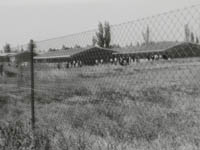
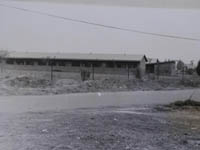

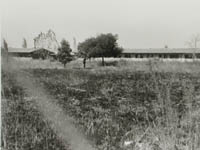
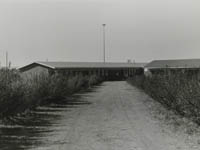

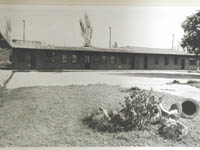
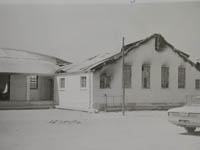

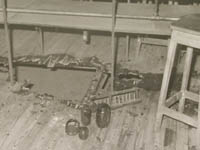
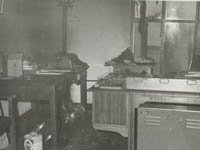
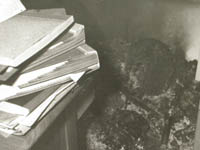
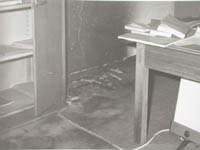
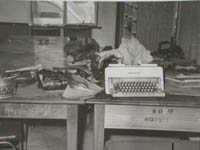
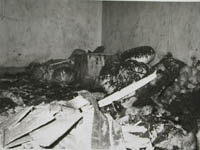
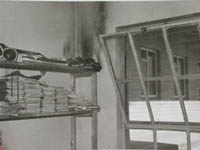
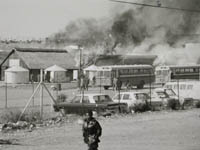
![Redbook Cover DOCUMENT: DSCN3016, DSCN3017-24 Redbook Contents, Inside Cover and Page 1-77]](images/thumbnails/DSCN3016.jpg)
![Redbook Cover DOCUMENT: DSCN3016, DSCN3017-24 Redbook Contents, Inside Cover and Page 1-77]](images/thumbnails/DSCN3017.jpg)
![Redbook Cover DOCUMENT: DSCN3016, DSCN3017-24 Redbook Contents, Inside Cover and Page 1-77]](images/thumbnails/DSCN3018.jpg)
